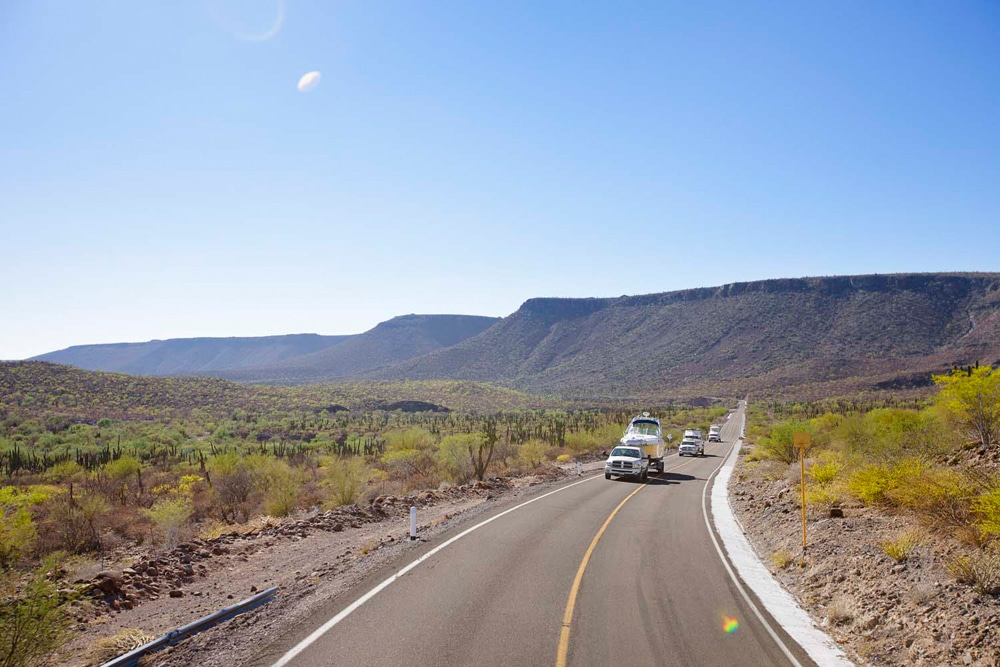
Trailer Boating in Baja
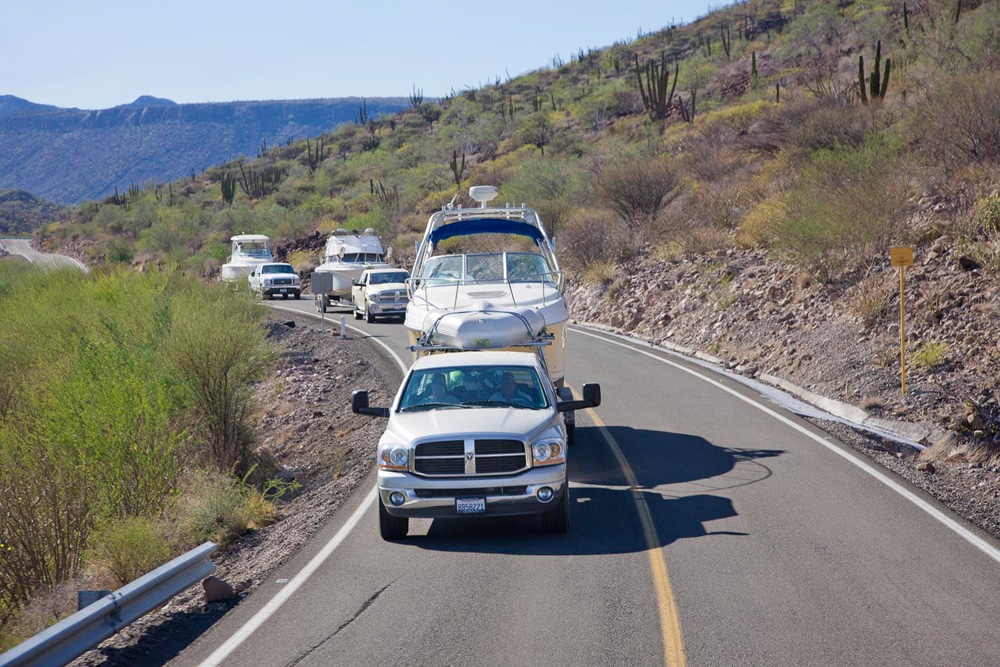
Trailer Boating in Baja
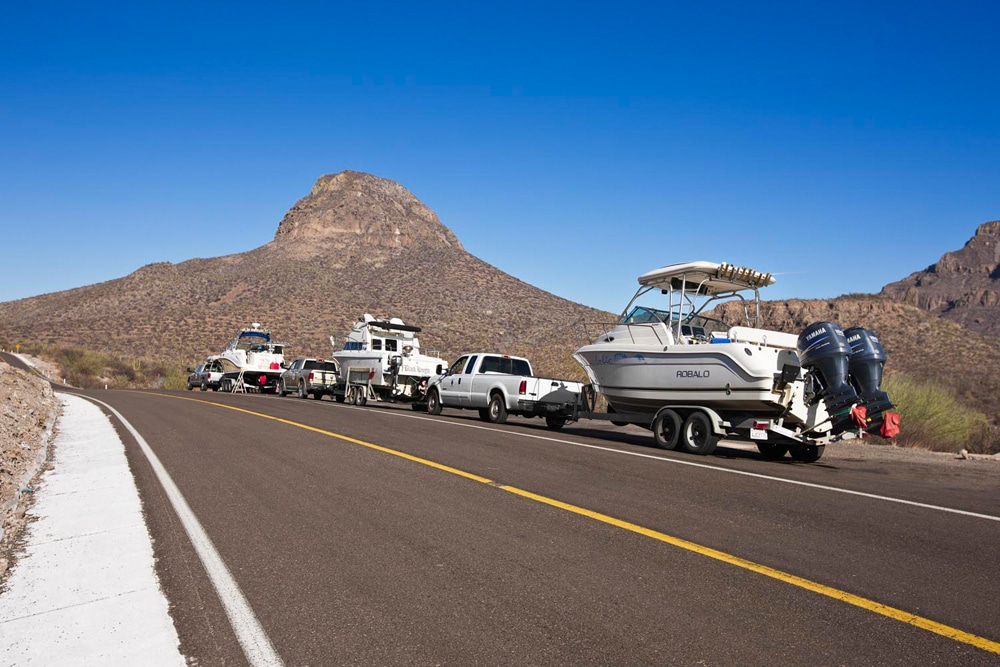
Trailer Boating in Baja
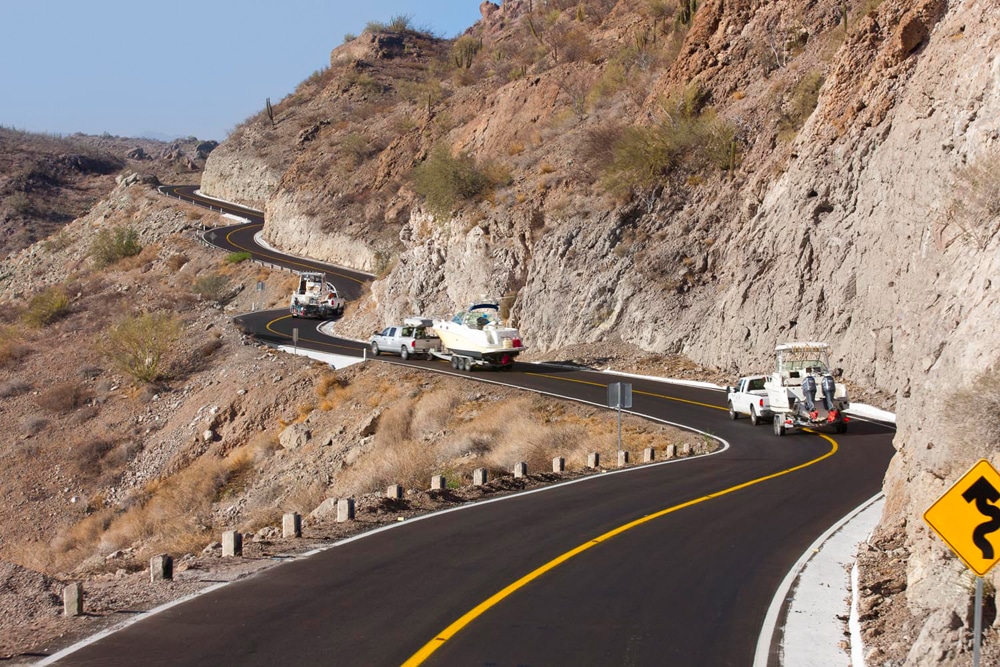
Trailer Boating in Baja
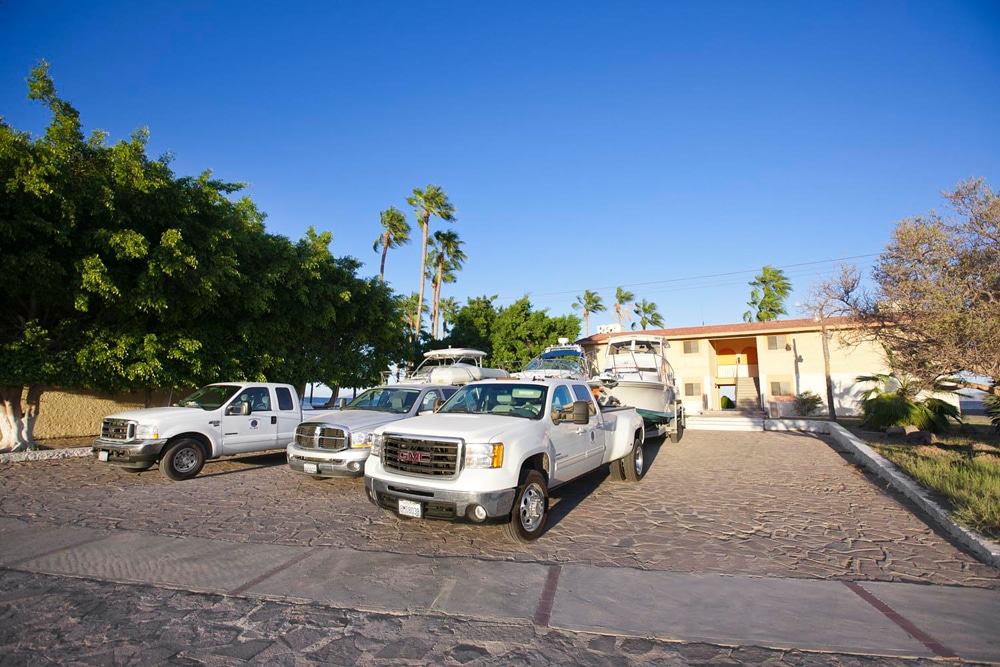
Trailer Boating in Baja
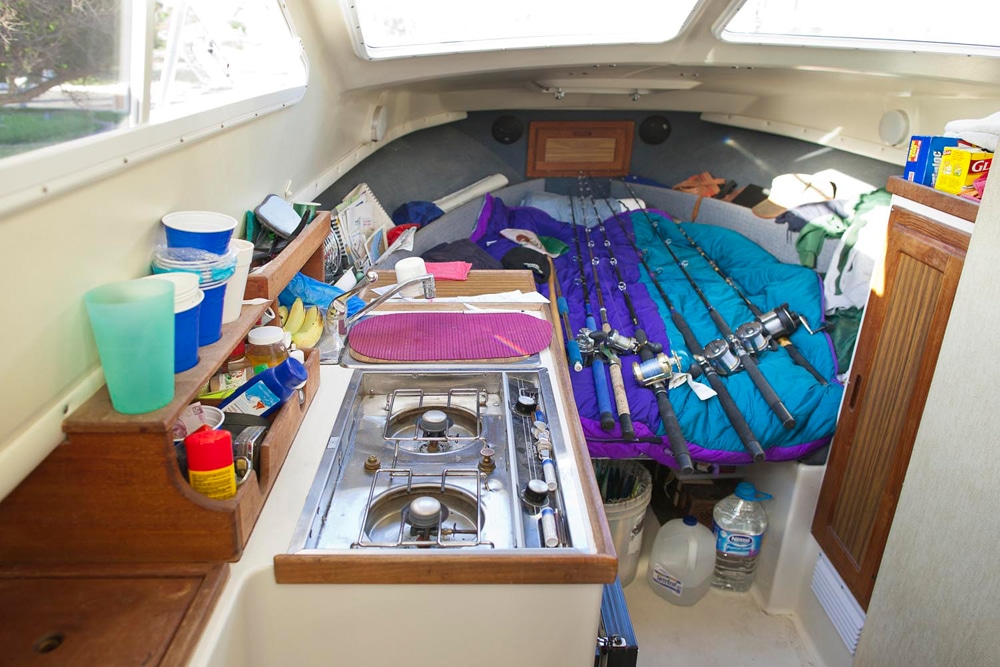
Trailer Boating in Baja
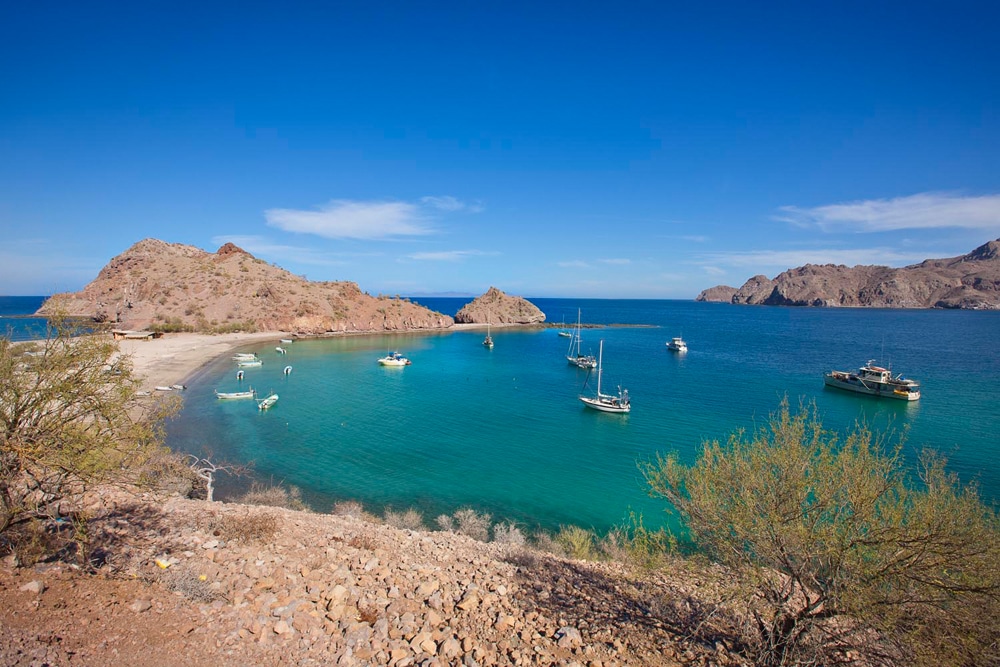
Trailer Boating in Baja
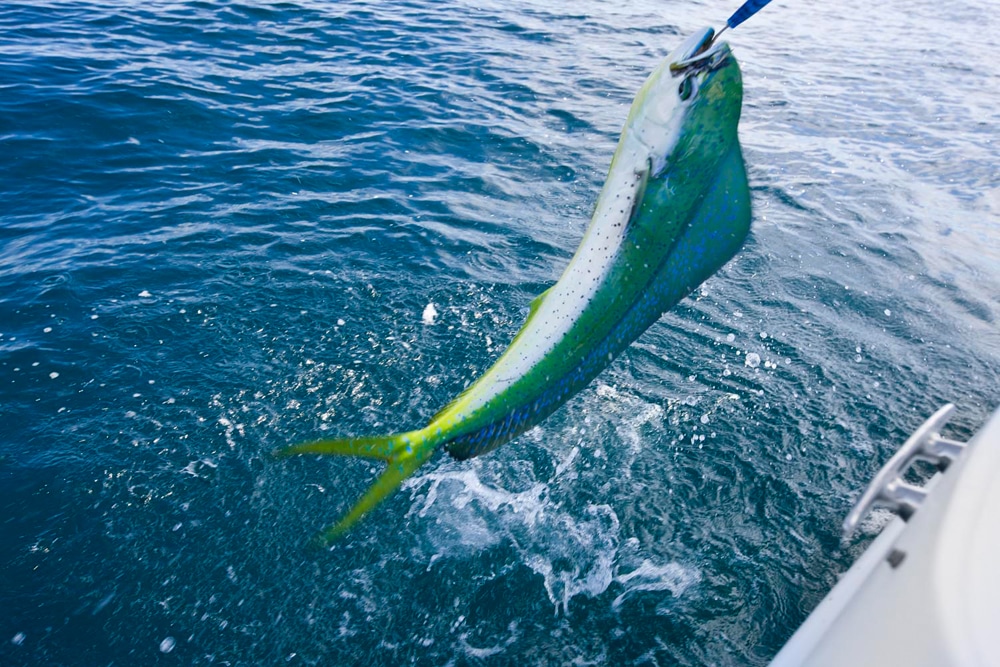
Trailer Boating in Baja
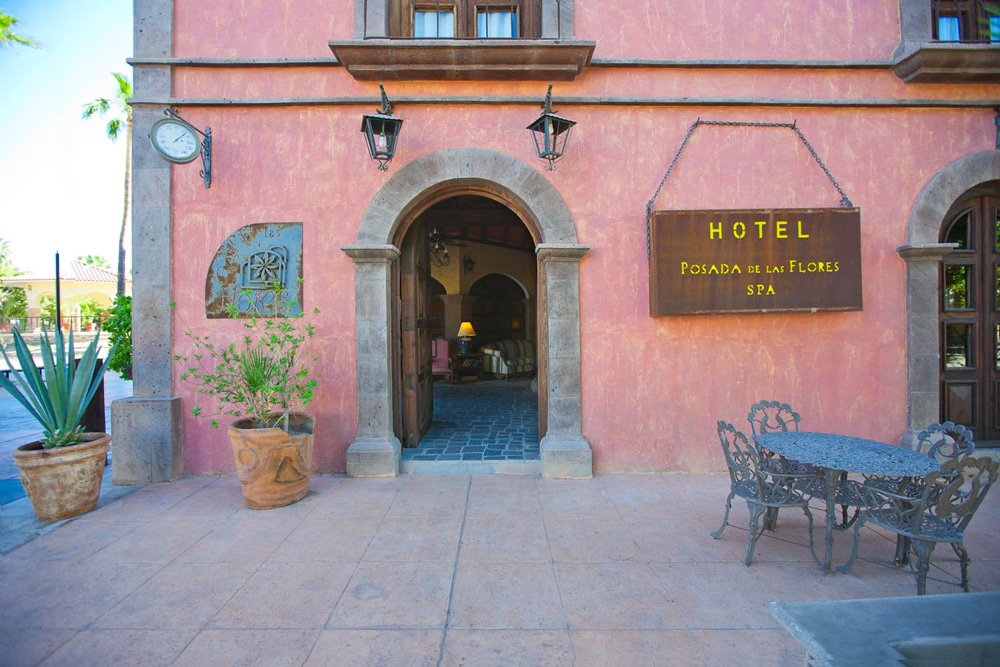
Trailer Boating in Baja
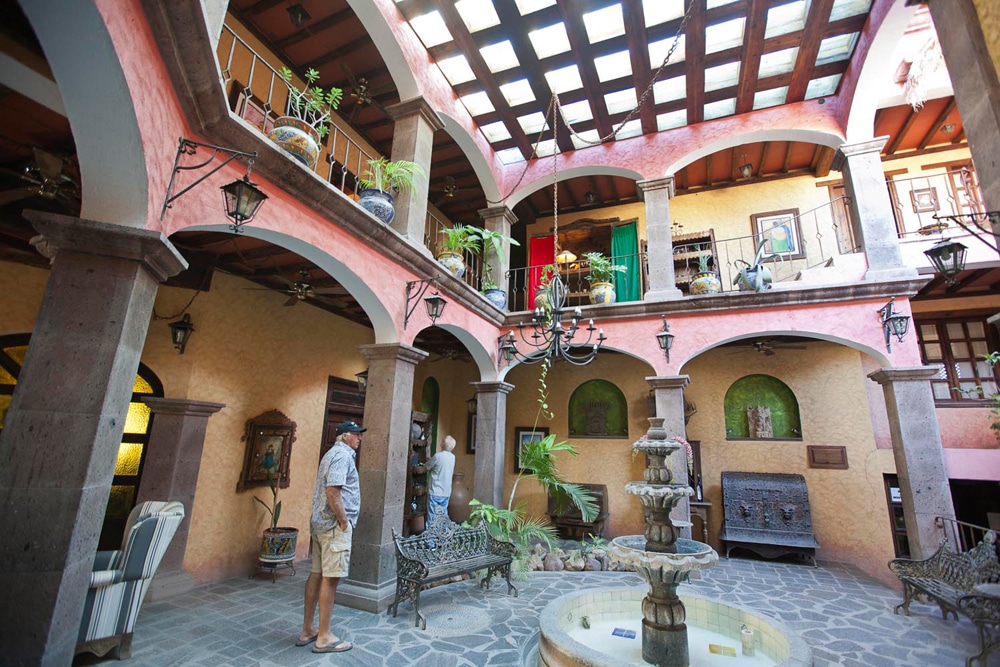
Trailer Boating in Baja
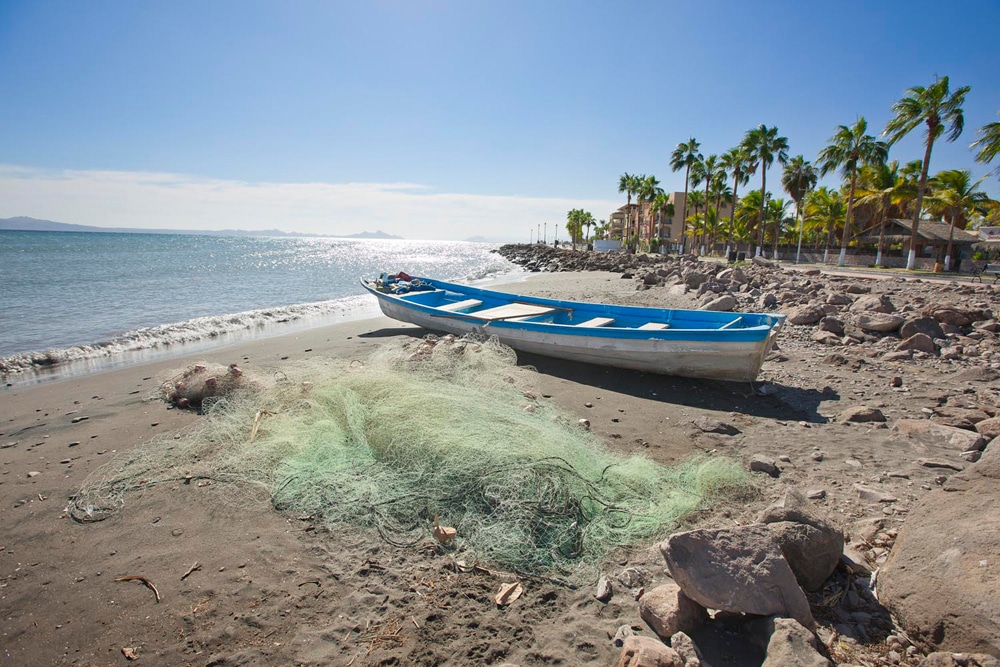
Trailer Boating in Baja
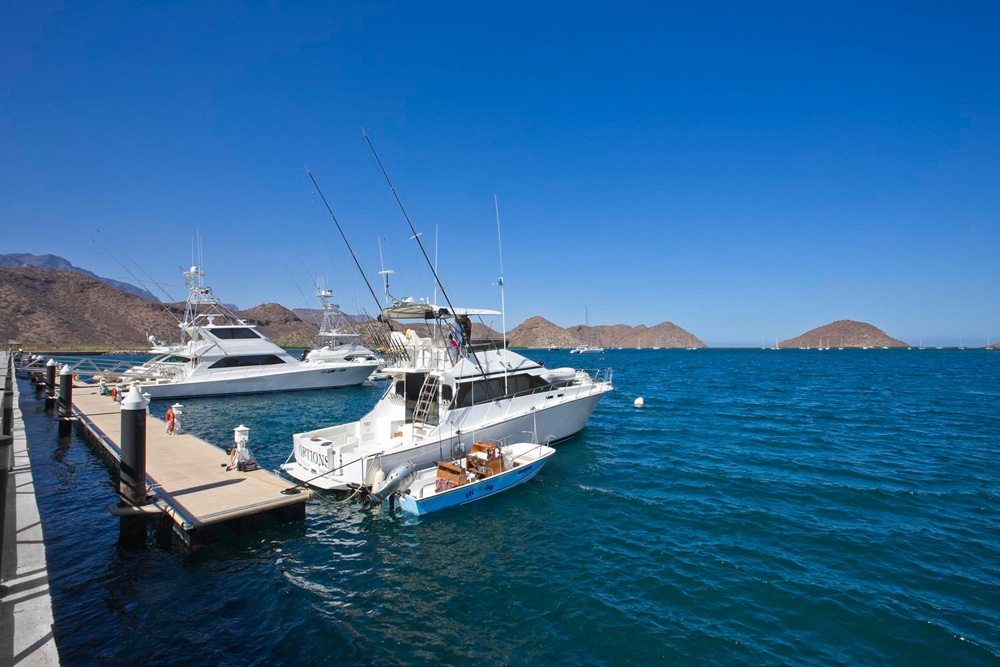
Trailer Boating in Baja
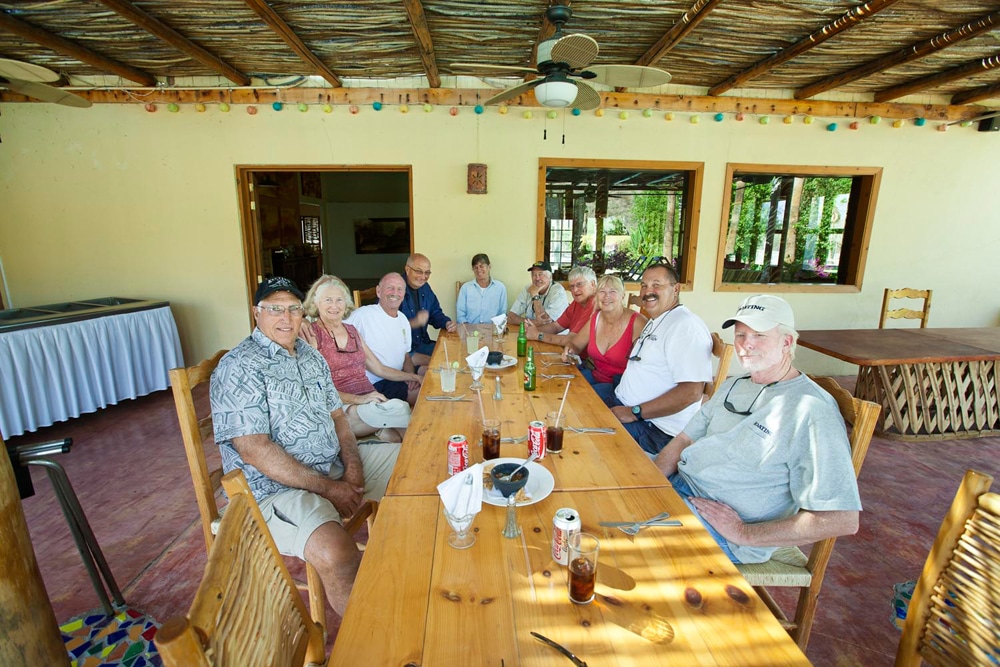
Trailer Boating in Baja
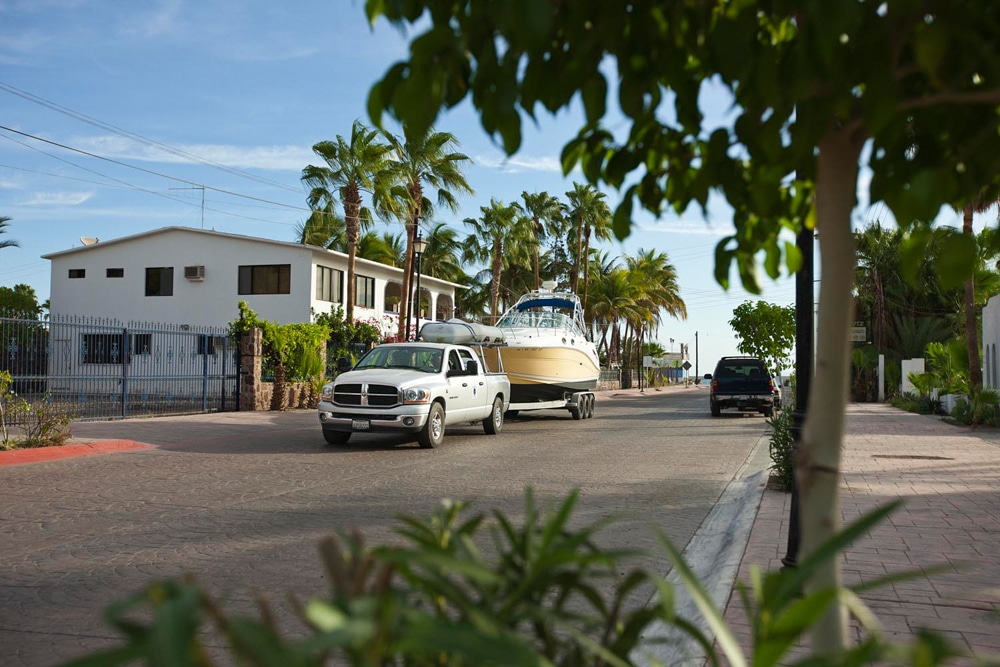
Trailer Boating in Baja
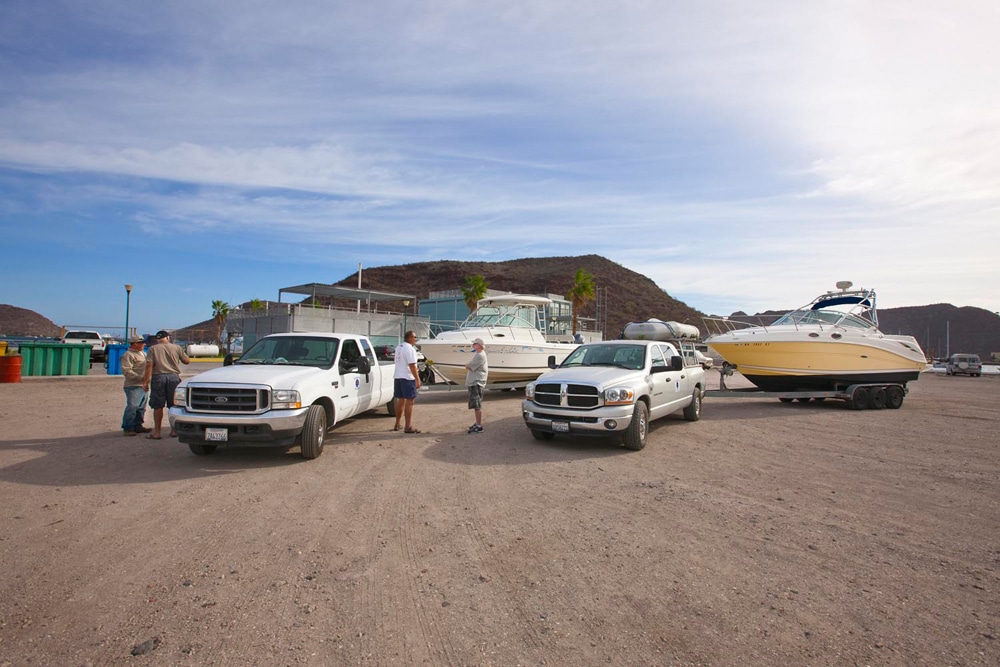
Trailer Boating in Baja
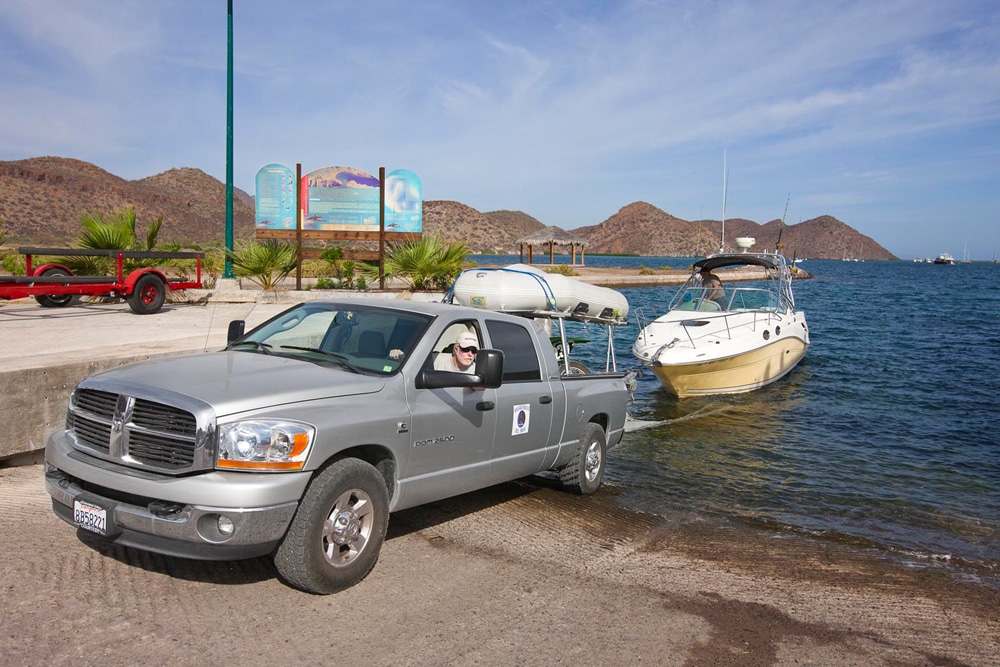
Trailer Boating in Baja
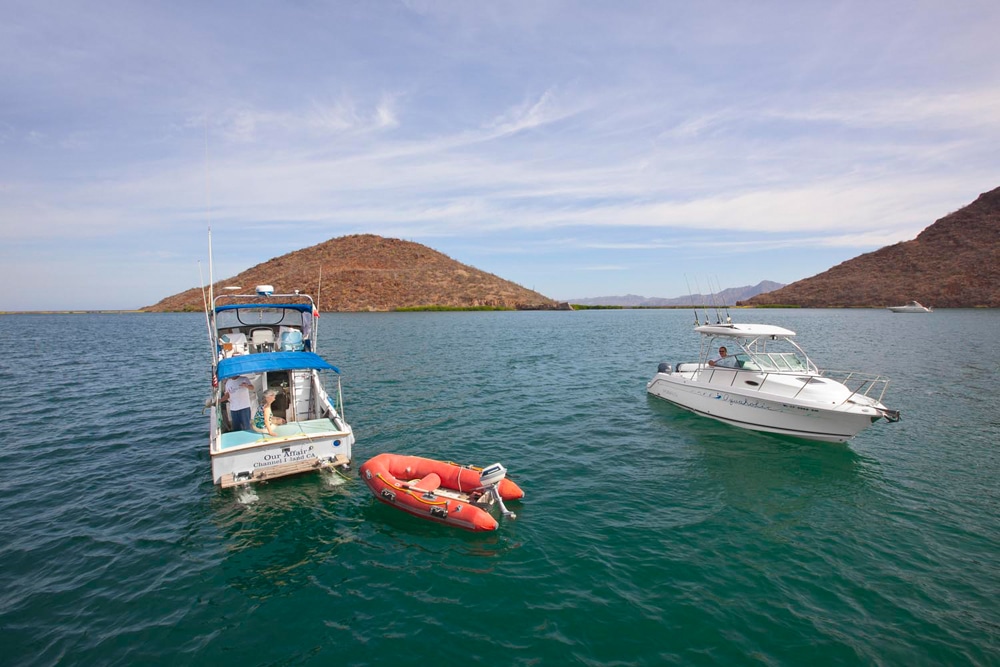
Trailer Boating in Baja
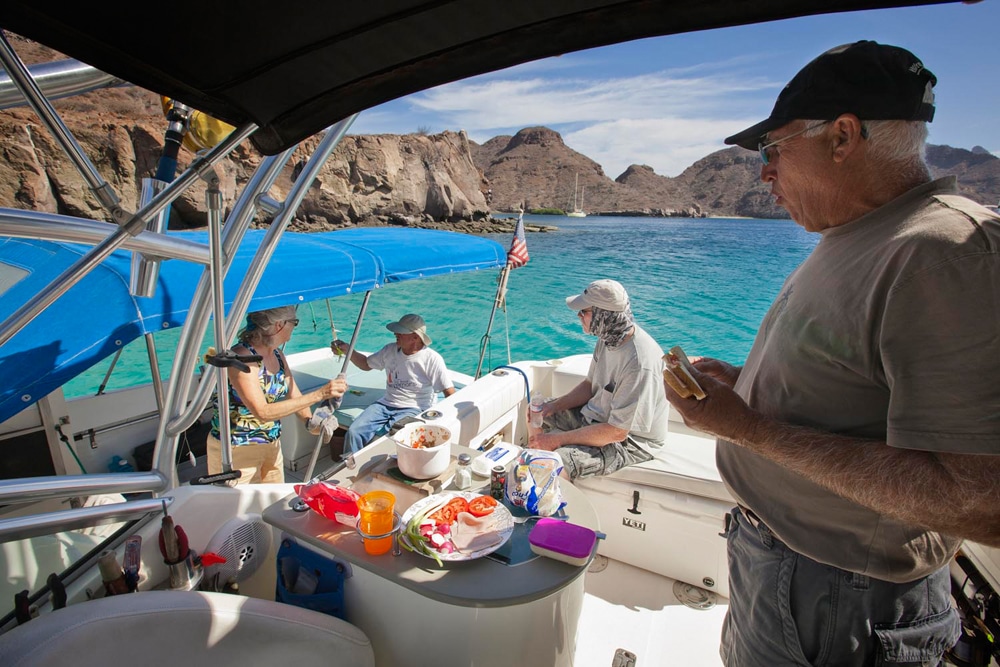
Trailer Boating in Baja
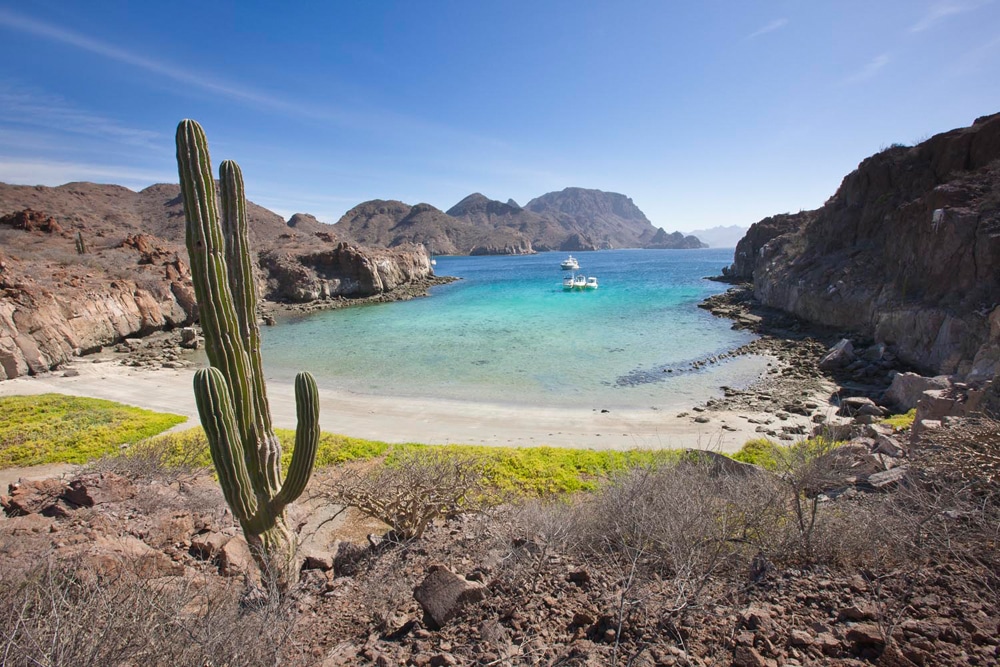
Trailer Boating in Baja
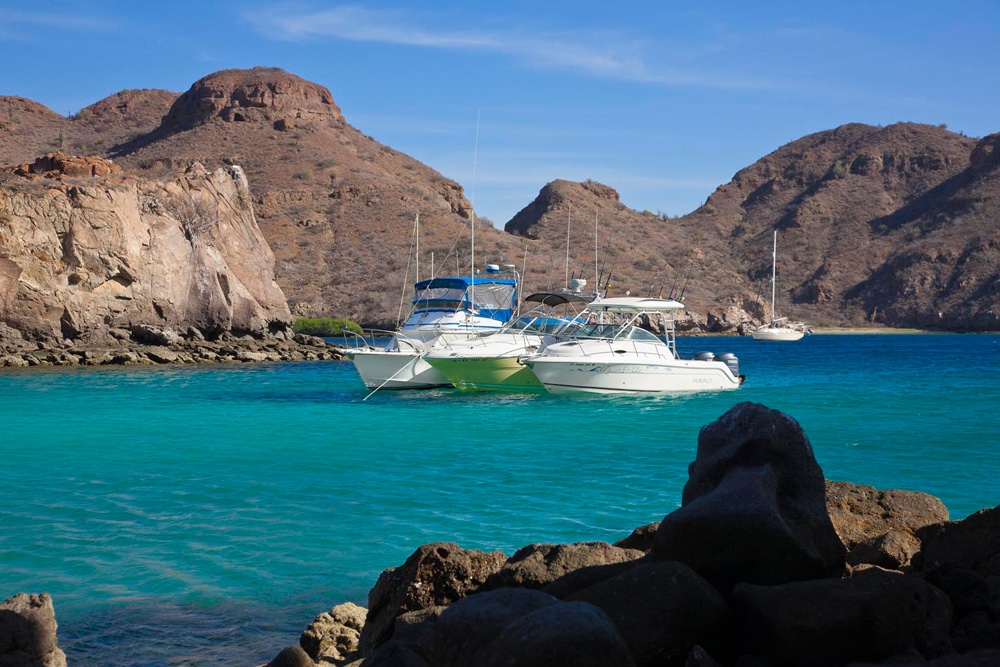
Trailer Boating in Baja
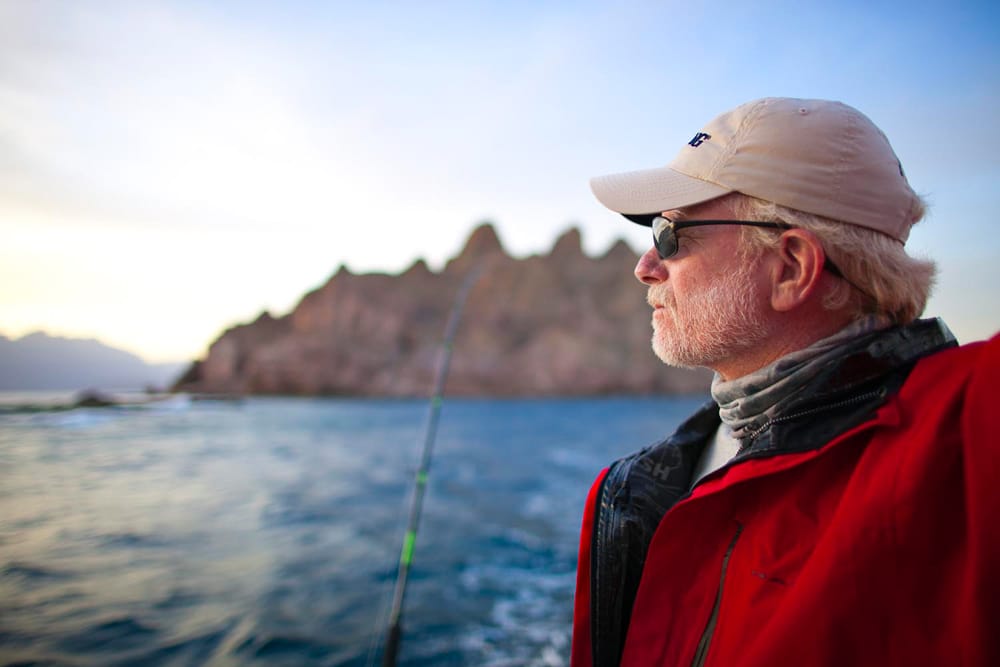
Trailer Boating in Baja
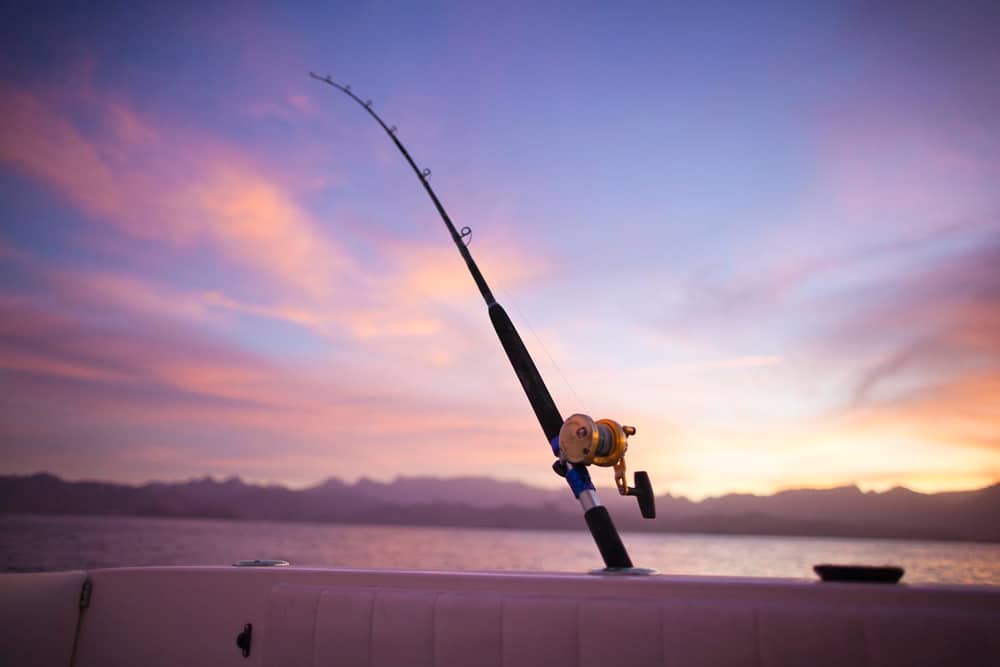
Trailer Boating in Baja
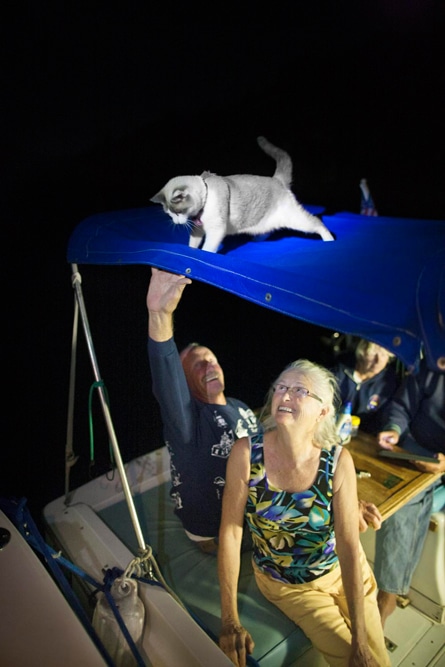
Trailer Boating in Baja
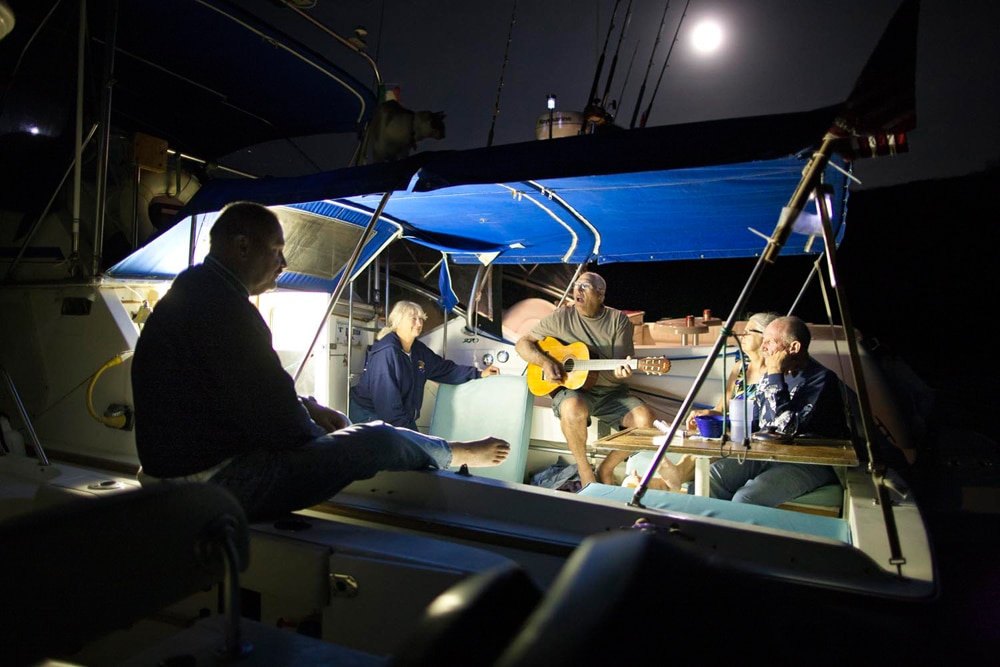
Trailer Boating in Baja
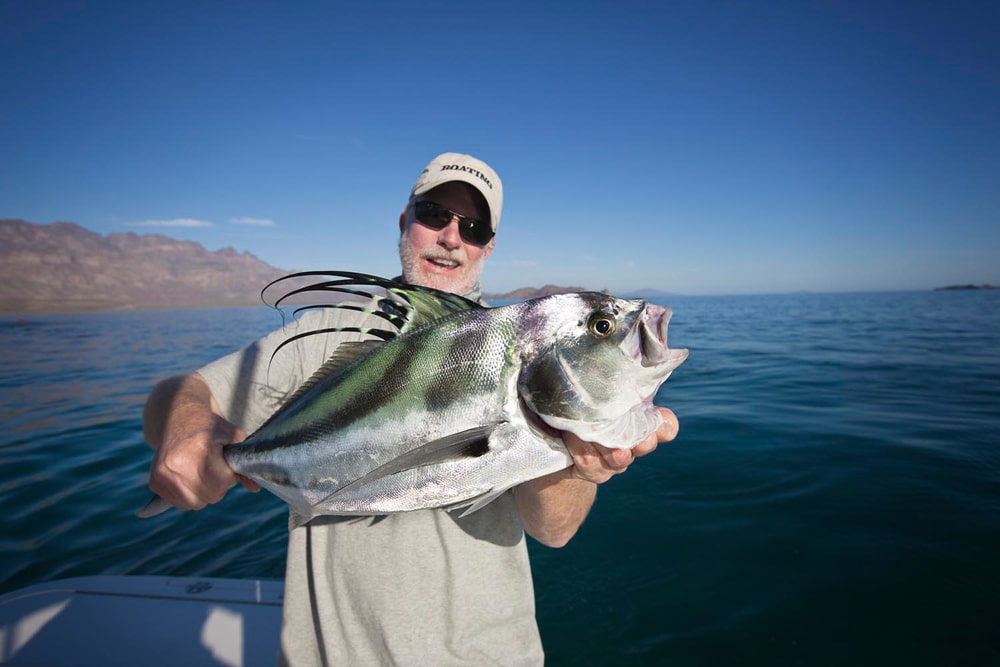
Trailer Boating in Baja
Mexico’s Baja California peninsula is truly a frontier — exotic, rugged and remote. Yet it’s right next door, so Baja’s picturesque shores, teeming waters and sweeping vistas are within striking distance for trailer boaters in the West.
Today, however, Mexico has a bad reputation for violence. News reports of drug cartels and bandits now have many American boaters reluctant to risk towing their rigs across the border.
Not everyone is fearful.
“We feel safer down in Baja than in the downtown areas of many California cities,” says Gloria Jones, who co-owns Vagabundos del Mar (vagabundos.com) with her husband, Fred. The 45-year-old club organizes trailer-boating caravans to Mexico.
To see for ourselves, we decided to join a Vagabundos caravan last fall.
Group Dynamics
The caravan was two weeks into a monthlong sojourn when we intercepted it near the dusty town of Ciudad Insurgentes, about 790 miles below the border.
Joe McGinnis, 68, greeted us. Tall, broad-shouldered and affable, McGinnis towed his Sea Ray 270 Amberjack into Baja from his home in Simi Valley, California, along with three other West Coast trailer boaters.
With five Baja trailer-boat trips to his credit, including three as volunteer jefe (boss), McGinnis quickly related one big advantage of a group.
A few days earlier, members had been fishing the Pacific side of Baja out of Puerto Adolfo Lopez Mateos when one of the boats — a Skipjack 26 flybridge owned by Ron Reinhardt, 73, of Escondido, California — broke down 70 miles from the launch site.
With no commercial towing services in this part of the world, fellow Vagabundo David Hill, 68, of Bakersfield, California, towed Reinhardt’s boat back to port with his Skipjack 28 Express. It was a 10-hour ordeal.
“Down here, there are few marine or road services,” McGinnis said, “and so the group is an important support and safety system.”
Well-maintained tow vehicles and trailers are also important. “I recommend at least a ¾-ton pickup, particularly for the size of boats we tow down here,” McGinnis said as we departed Insurgentes for Loreto, a shore town on the gulf side of Baja. McGinnis tows with a Dodge 2500 diesel crew cab and a triple-axle galvanized trailer.
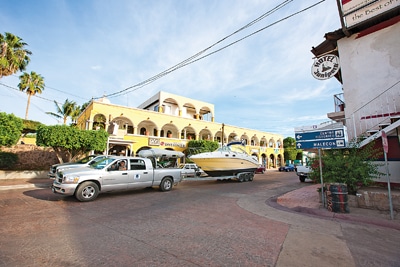
“A multiaxle trailer is a must in Baja,” he said. “It lends greater stability when there are high winds or you’re blasted by a gust as a commercial truck blows by you.
“Also, if you have a flat tire, it allows you to limp to the nearest turnout, which might be miles away.”
When it comes to spare trailer tires for Baja, McGinnis has a simple rule. “You can’t have too many,” he said. “Two is minimum. Three is better.”
Two-Lane Blacktop
For most of its 1,060-mile distance, Baja’s main artery, Mexico Highway 1, is a narrow, two-lane road with few turnouts. It courses through blistering deserts and murderous grades. In years past, it gained an infamous reputation for unrepaired potholes, washouts and crumbling shoulders. Yet, little of this was evident during our visit. The road was in better condition than most American highways.
This is not unusual, said group members Larry and Janet Lammon of Acton, California. The jovial, gregarious couple, both in their 50s, seemed to enjoy every moment of their Baja adventure.
“We come down here as often as we can,” Larry Lammon said while towing the couple’s twin-outboard-powered Robalo R245, the smallest boat in the group. He has been visiting Baja since the mid-1980s. “Not only do we feel safe, but the main highway has never been in better shape than it is today,” he said.
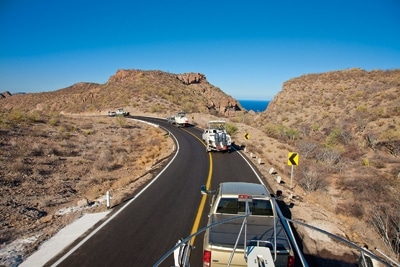
We found gasoline and diesel readily available at the Pemex stations along the highway at relatively inexpensive prices (about $2.90 per gallon for gas or diesel) — thanks to the Mexican government’s fuel subsidies.
As we descended the mountainous backbone of Baja, the panoramic Gulf of California and its numerous isles came into view, reminders of why boaters have always been drawn to this body of water, known more romantically as the Sea of Cortez.
We were also reminded of one downside of Baja in fall — the likelihood of high winds. The gulf was festooned with whitecaps.
Members of our caravan were using walkie-talkie radios to communicate, and the conversations focused on where to spend the evening. It was at this moment we sensed the challenge of keeping the group together.
Like Herding Cats
Most agreed to stay at Loreto’s Desert Inn (desertinns.com/Loreto) on the north side of town, but Reinhardt and crew member Bill Toepfer insisted on staying at La Mision Hotel (lamisionloreto.com) near the middle of town. Reinhardt’s boat was still broken, and evidently so was his commitment to staying close to the group.
After hearing this, McGinnis was downhearted but philosophical. “Each one of these boat owners is an independent type,” McGinnis said as the caravan rumbled through the streets of Loreto, “and sometimes it goes against his nature to stick together. It’s like herding cats.”
The group reconvened that evening for drinks and dinner, but that was the last time we saw them all in one place.
We awoke the next morning to more wind and no hope of getting on the water. We also learned that another member of the caravan was splitting away.
David Hill informed McGinnis that he planned to trailer his rig solo to Bahia de Los Angeles about 380 miles north.
McGinnis tried to persuade the wiry, impatient Hill to stay, but he was gone before breakfast. Watching him drive away, McGinnis was again philosophical.
“There’s no signed agreement to stay together,” he said. “It’s real informal, but once you leave, you lose the support system. I hope he makes it OK.”
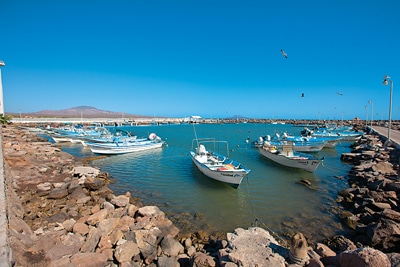
We spent the blustery day exploring Loreto and found the warmth and kindness of the Mexican people wherever we went. “You find this everywhere in lower Baja,” said American expatriot Bob Neal, who has a casa (house) near Juncalito, a small fishing village about 17 miles south of Loreto. “You can walk around down here day or night and always feel safe,” he said.
The next day, the wind was still up, but the two boats left in the group were committed to getting out. And yet another boat was set to join us.
Vagabundos del Mar members Dan and Shirley Atkinson, both in their late 60s, had cruised to the Loreto area two days earlier in their Safari 28 flybridge from their home in San Carlos on the Mexican mainland.
We met them in Puerto Escondido, a marina 25 miles south of Loreto. The Atkinsons are the archetypal Vagabundos and regularly cruise the Gulf of California along with their cat, Sugar.
“Even when we’re home, we live aboard this boat more than we stay in the house,” Dan Atkinson said.
Vagabundos Lifestyle
It was only after we were afloat that we began to fully experience the Vagabundos lifestyle. Our trio of boats braved the seas for the three-mile crossing from Puerto Escondido to Honeymoon Cove on the northwestern corner of Isla Danzante.
We immediately rafted up in the lee of the island, and then the group pooled its provisions for a midday meal as Janet Lammons announced, “Vagabundos never starve.”
While the wind was still blowing that afternoon, McGinnis decided to leave the comfort of the raft-up to go fishing. We pounded our way a couple of miles east toward the south end of Isla Carmen and trolled deep-diving plugs along its rugged shoreline.
While we tried to troll in 30 to 40 feet of water, depths vary wildly close to the rocky islands in the gulf. Within casting distance of the jagged shores, depths can plummet to 100 feet, and then a pinnacle suddenly can zoom to within a few feet of the surface.
“When fishing an unfamiliar shore, keep one eye on the fish finder,” McGinnis said, pointing to the screen as the bottom began to shoot upward. “That’s my cue to steer out to deeper water.”
As the sun sank over the mountains of Baja, we finally caught and released a small black skipjack — a member of the tuna family. “We’ll try for some more tomorrow,” McGinnis said as we reeled in the lines and headed back to the raft-up.
With calm seas the next morning, all three boats went fishing. A few miles down the coast, we found three Mexican men fishing from their panga, a narrow outboard-powered skiff. We inquired about buying a handful of sardines for bait. That’s when we discovered a currency in Baja more valuable than dollars or pesos.
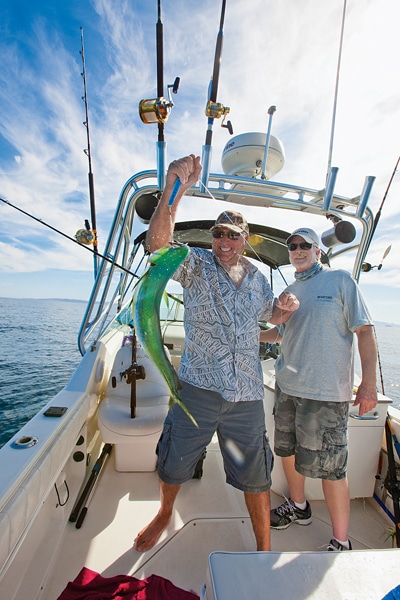
Despite a language barrier, we quickly understood that oranges (naranjas) and lemons (limons) were much preferred. Unfortunately, we had no citrus, and the fishermen reluctantly accepted our pesos. They also pointed us a few miles down the coast and spoke a magic word, dorado.
We thanked them profusely and started to troll in the direction they pointed us. They weren’t kidding. Within 15 minutes, McGinnis’ boat hooked and landed a dorado (aka mahimahi), and he put it on ice. It was destined for dinner that night.
With that, the most treasured resource of Baja became clear. It is not fish, nor scenic beauty. It is the Mexican people. Contrary to the news reports, these people welcomed us in and treated us with kindness and generosity. We never felt safer.
Viva Baja.
Baja Resources
There are two insightful books on towing and fishing in the waters surrounding Baja California, as well as one with valuable fishing charts:
The Angler’s Guide to Trailer-Boating in Baja by Zack Thomas; bajatrailerboating.com
The Baja Catch by Neil Kelly and Gene Kira; bajaquest.com
Sportfishing Atlas Baja California Edition from Baja Directions; bajadirections.com
Required Papers
There are documents you must have to legally enter, stay, drive, boat and fish in Mexico, including:
-Passport and Mexican tourist visa*, plus your vehicle, trailer and boat registrations
-Mexican automobile liability insurance (approx. $16 to $23/day for minimum $25,000)
-Mexican fishing license ($44.80/year)
Two organizations can help obtain Mexican documents and insurance:
-Discover Baja; discoverbaja.com
-Vagabundos del Mar; vagabundos.com
_* Visa rules were in flux at press time.
_
Ultimate Spares List
Here is a list of important parts and supplies for your vehicle and trailer when towing in a remote area like Baja California:
Vehicle
-Motor oil
-Oil filter
-Fuel filter
-Air filter
-Transmission fluid
-Fan belt
-Radiator hoses
-Coolant
-Radiator cap
-Jumper cables
-Battery pack
Trailer
-Bearings kit
-Bearing protectors
-Bearing grease
-Brake fluid
-Trailer light bulbs
-Tire-puncture repair kit
-12-volt air compressor
-Lug wrench
-Trailer jack
-Assorted 12-volt wire connectors









